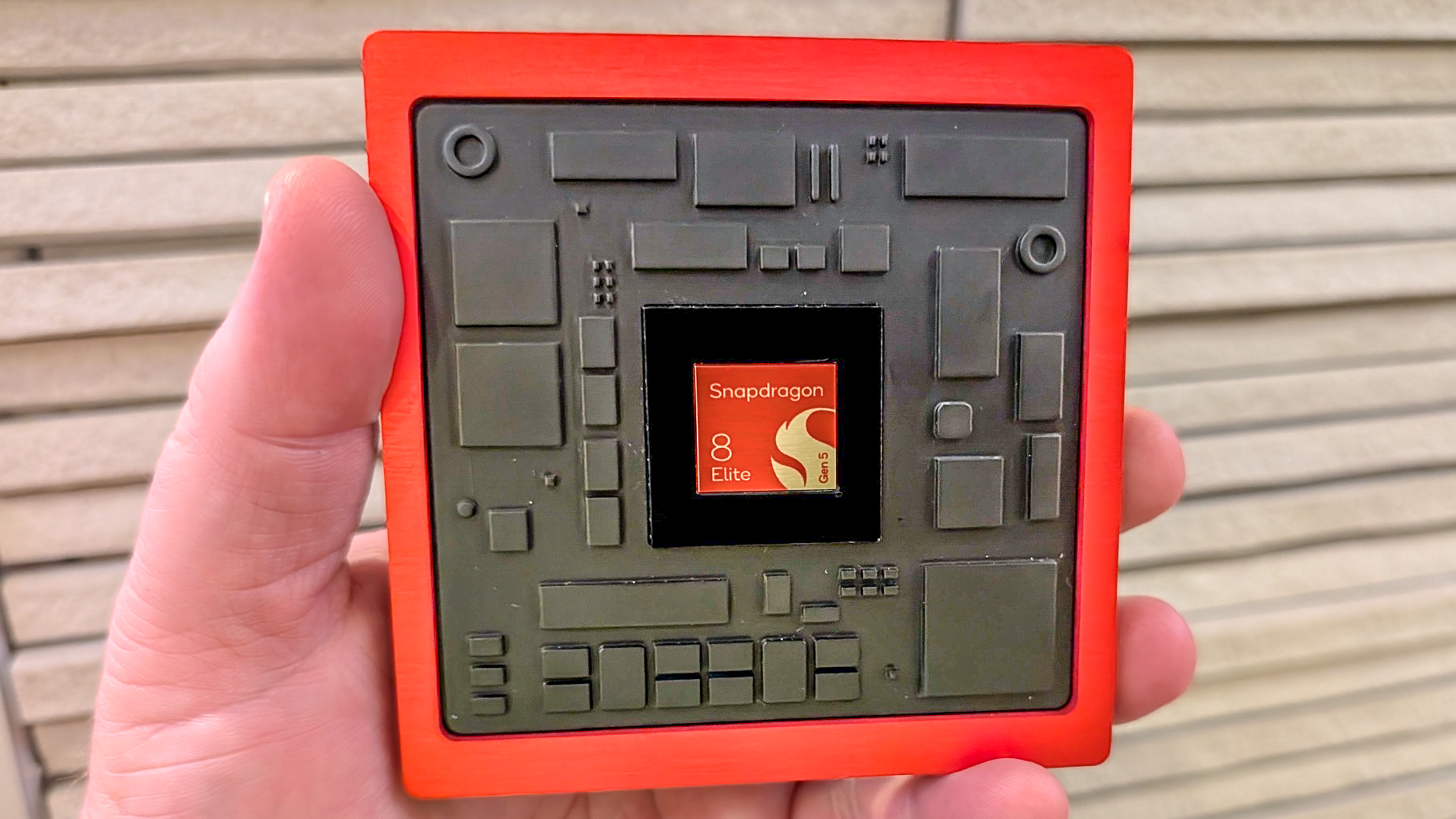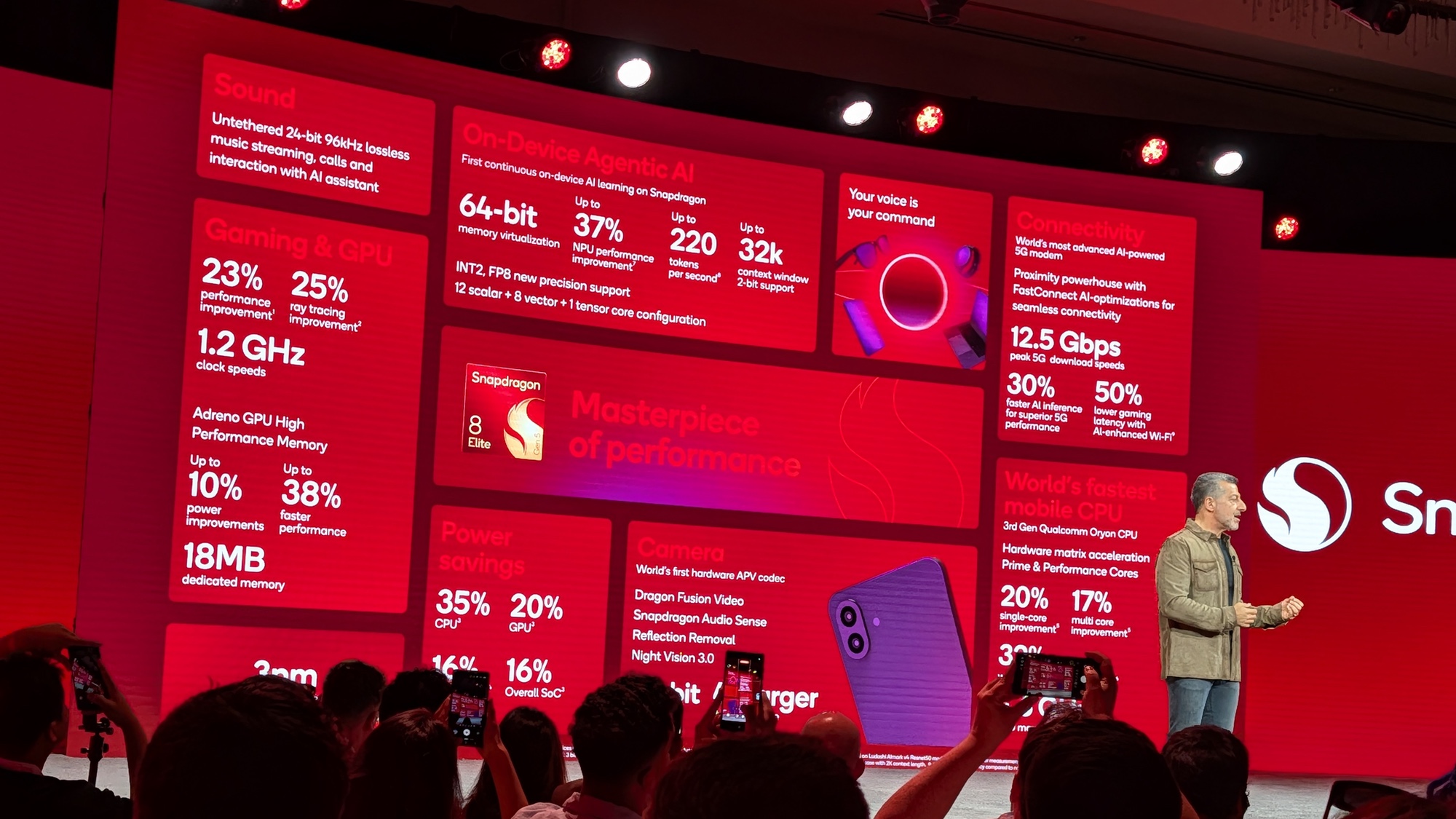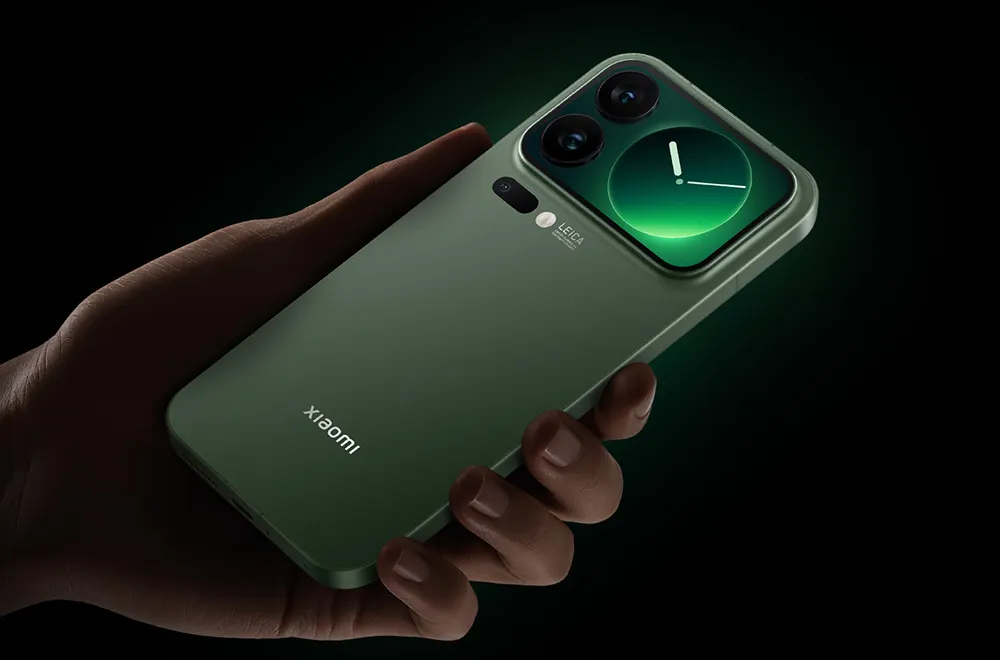Artificial intelligence figures to play a big role on major Android phones in the coming year, and the Snapdragon 8 Elite Gen 5 system-on-chip powering those devices will be a big reason why.
Meet the executives

Cindy Lei, director of product management at Qualcoom (left) and Vinesh Sukumar, vice president of artificial intelligence at the company, both played key roles in the development of the new Snapdragon 8 Elite Gen 5 silicon.
The chip, introduced at last week’s Snapdragon Summit, brings the usual round of performance improvements, which I saw first-hand when benchmarking a device powered by the Snapdragon 8 Elite Gen 5. But the real focus of the chips seems to be a redesigned neural engine that consumers less power while boosting overall performance. The end result should be more on-device AI, with features like the cross-app actions that debuted on this year’s Galaxy S25 phones reaching more devices.
At least, that’s my interpretation of what Qualcomm is talking about when it raises the possibility of more agentic AI capabilities on board Snapdragon 8 Elite Gen 5 hardware. To find out what Qualcomm really has in mind, I sat down with a pair of executives at the chipmaker to discuss all things AI.
Cindy Lei is a director of product management at Qualcomm, and she oversaw the development of the Snapdragon 8 Elite Gen 5. Vinesh Sukumar is a vice president of AI product management with the company. Both spoke with me during the Snapdragon Summit, which I attended as a guest of Qualcomm’s.
This interview has been edited for length and clarity.
What role does AI play with the Snapdragon 8 Elite Gen 5?
Vinesh Sukumar: It plays a very important role because when you look at most of the experiences we’re trying to go towards, either being the perception space like detection, classification, segmentation, enhancements — that is multiple domains in the camera, audio display, gaming. Then you have generative experiences, which are foundational for creating synthetic data — image, text, video — which is foundational for both gaming and also agentic experiences. So, from my perspective, I think it’s the most important element, but that’s Cindy’s question on whether she feels it’s the same or not.
Cindy Lei: Oh, I do feel the same. I think that AI, this personal assistant, is going to be extension of you. Our phone is already an extension of us today.If there’s one thing we can’t leave the home without, it’s going to be our phone, and now you have this personal assistant that needs to be with you. It has to have enough capability and horsepower to run, but it also has to be able to last all day. And I think that that’s what the Snapdragon 8 Elite Gen 5 brings to the table.

Earlier at the Snapdragon Summit, you talked about the different aspects of the chipset working together in service of AI and how it’s kind of like a symphony. I thought that was an interesting point, and I was hoping you could elaborate on that.
Lei: When we look at AI or any kind of workflow, we really look and see what is the most suitable processing unit to actually run that particular workload. If it’s something that requires very low latency, fast response time, that may be running from the CPU side of things. If you’re talking about a heavy workload, the [Large Language Model], those would be on the NPU.
“You can’t miss a beat. [The chip components] have to work together exactly at the same time when they need to work.”
— Cindy Leik Qualcomm
And another scenario, for example, in gaming, you’re running this crazy extreme game, so you’re using the full capability of our CPU, our GPU already. However, now you’ve got AI that comes into the picture. The AI can come in as maybe a coach in the background, like a backseat driver that tells you exactly how you should play your game. Or it could be a avatar that… actually alters your expressions. The avatar looks like you, and it has your expressions as well. Something like that could be running from the NPU, but they all have to work together seamlessly, right?
So this is why I say it’s kind of like a symphony. You can’t miss a beat. They have to work together exactly at the same time when they need to work.
A term that’s that’s come up a lot when then talking about the Snapdragon 8 Elite Gen 5 is agentic AI, and I’m not sure that necessarily resonates with regular consumers and what they think of when they think of AI. So how would you describe agentic Ai, and how is it different from the kind of writing tools and image editing features that are already on their phone?
Sukumar: Historically, [AI] has been baked into the daily experiences that [the consumer] don’t see happen. So, if I’m taking a photo or a video, magically a lot of detail comes up — all that is based of AI. And if I’m trying to do a voice call, echo cancellation or noise cancellation automatically happens in the background, because AI is working and the user has no clue, this is happening.
Now, we’re kind of getting into an era where… we go to the next phase of evolution of how AI experiences are mapped to the user. And one of the elements happens to be agentic [AI]. Agentic is all about trying to create a scenario… where you want to move toward a natural environment. The app-less environment is all about, in an Android phone, I personally have 150-plus apps. And it makes extremely difficult to, you know, swipe the screen like 10 times to get to [my] app of choice. So can I use a primary interface to really make sure that it can complete a task which I am looking for?

The task could be at night, I’d like to send a text to my wife, saying, “I’m coming late to home from the airport.” [On-device AI] might come back and say, “you want to send it on WhatsApp, or do you want to send it on WeChat, or you want to send it n the regular Google messaging app?” I’ll come back and say, “Let’s do WhatsApp.” … it creates the text, sends it out and confirms to me that it’s been sent out. And next time, when I say two days from now, “Hey, please tell my wife I’m going to be late from office,” it should not ask whether I want to use WhatsApp; it needs to know that I prefer to communicate with my wife with WhatsApp and get it done
Again, these are simple productivity tasks to make the job of a user a lot more easier, and that’s what we intend to launch working with OEMs. … I’m not saying by any means that what we’re going to launch… is going to be perfect. We’re going to learn, [users are] going to give us feedback, and we’re going to use that feedback and say, “how can we make it better the next time?”
When I go and get a Snapdragon 8 Elite Gen 5-powered phone and fire it up, wat are some of the agentic AI experiences that I’m going to see out of the box? Or is that something you’re hoping to see as phone makers take advantage of features enabled by the chipset?
Sukumar: Great question, but I think we’ll have to wait for a couple of months.

Lei: If you look up [the just-announced Xiaomi 17 Pro], you’ll start to see. What we do is unlock all the capabilities with [Snapdragon] 8 Elite Gen 5. So now our OEMs are going to get really, really creative, and you’re gonna see in the next few months how creative they can be with all this capability that we provided. So Xiaomi will be the first one, and you’re going to see a wave of them. It’s very exciting, actually.
There’s a feeling among some people who buy tech products where some think that AI is overhyped, that it doesn’t bring anything essential to the phone. What would you say to convince them otherwise?
Sukumar: Being skeptical is always important because you always try to get the best or every technology investment that we try to do. So I totally respect that. I am the same way as well, so there’s no harm in that. But as I mentioned before, AI is baked in to most of phones experiences that people are not really realizing that it’s happening.
“AI is baked in to most of phones experiences that people are not really realizing that it’s happening.”
— Vinesh Sukumar
You’ll see that from the pictures that you take the videos that you take, or even noise cancellation during your calls. It’s already happening today. People also don’t realize when you’re using WhatsApp messaging, your recommendations of what would be the suggestive replies is all based on AI. Or if you’re looking at certain locations, certain responses of what’s good from a shopping perspective, or you want from a travel perspective, we’ve already pre-baked and then provided to you as a function of AI. And when you get used to it, they don’t explain to you how you get to this point because of AI. But when you experience it on a day-to-day basis, it becomes ubiquitous and resident as part of your daily life.
Could we make it a lot more interesting? Absolutely. We try to make sure that the agentic AI sets the next definition of [user experience], while at the same time we also have to be extremely careful on this user information so that it’s extremely secure, private, and stored within the device. And that’s what we’re trying to make sure that we provide a lot more investment in, that that we don’t compromise on that.
Lei: That’s very well said. I think we don’t realize how much AI is already in our life. And that’s kind of our goal: Fade the technology into the background, and you don’t actually see it, but it’s just there. It actually is already part of your life.
What’s the next step for AI on mobile devices? Now that you’ve gotten the Snapdragon 8 Elite Gen 5 out and you move on to the next thing, where do you go from here?
Sukumar: I think for me, it’s transitioning towards how do you make the AI agentic experience a lot more more personalized. The element of personalization is extremely difficult, extremely hard. How do we make it a lot more accurate? A second things is how do you look at hybrid concepts that could be between a device-to-a-device or a device-to-the-cloud. And making that decision quite dynamically and not statically predefined is also quite important. … We have to make sure we are able to get that done.

Last but not least is if I can make these devices fully autonomous that it was able to provide suggestive responses, actions, next steps. So these can get some sleep for me, and then, Cindy does not bother me, and she comes back and says, “Hey, what are your next specs?”” I can come back and say, “Please let her help with that stuff.”
Lei: Ask your own personal assistant, yeah?
For me, we juggle work, we juggle kids. There’s so much juggling in life. I do want a personal assistant. If you just look at any individual and askm what can you help with. If you had a system next to you, what can they do for you? I think everybody will give you a list. Our goal is to have the capability to do that and make sure that the OEMs start designing different type of experiences that just help the end consume on a daily basis. And a few years from now, the end consumer won’t even realize it, but it was AI, and somehow, things just got easier.
Follow Tom’s Guide on Google News to get our up-to-date news, how-tos, and reviews in your feeds. Make sure to click the Follow button.
More from Tom’s Guide
Back to Mobile Cell Phones